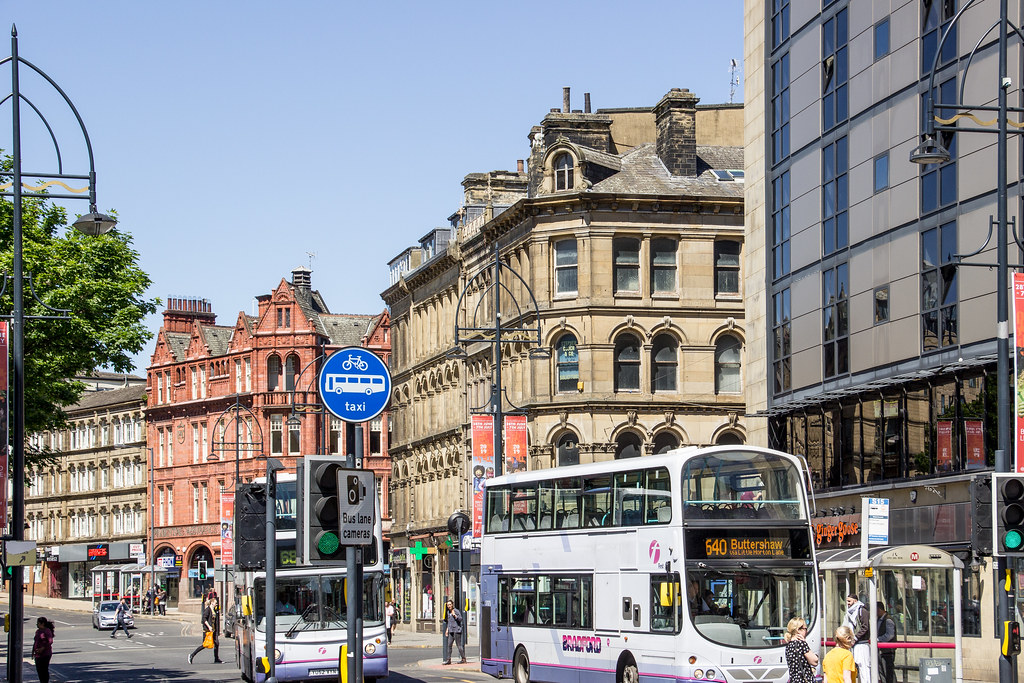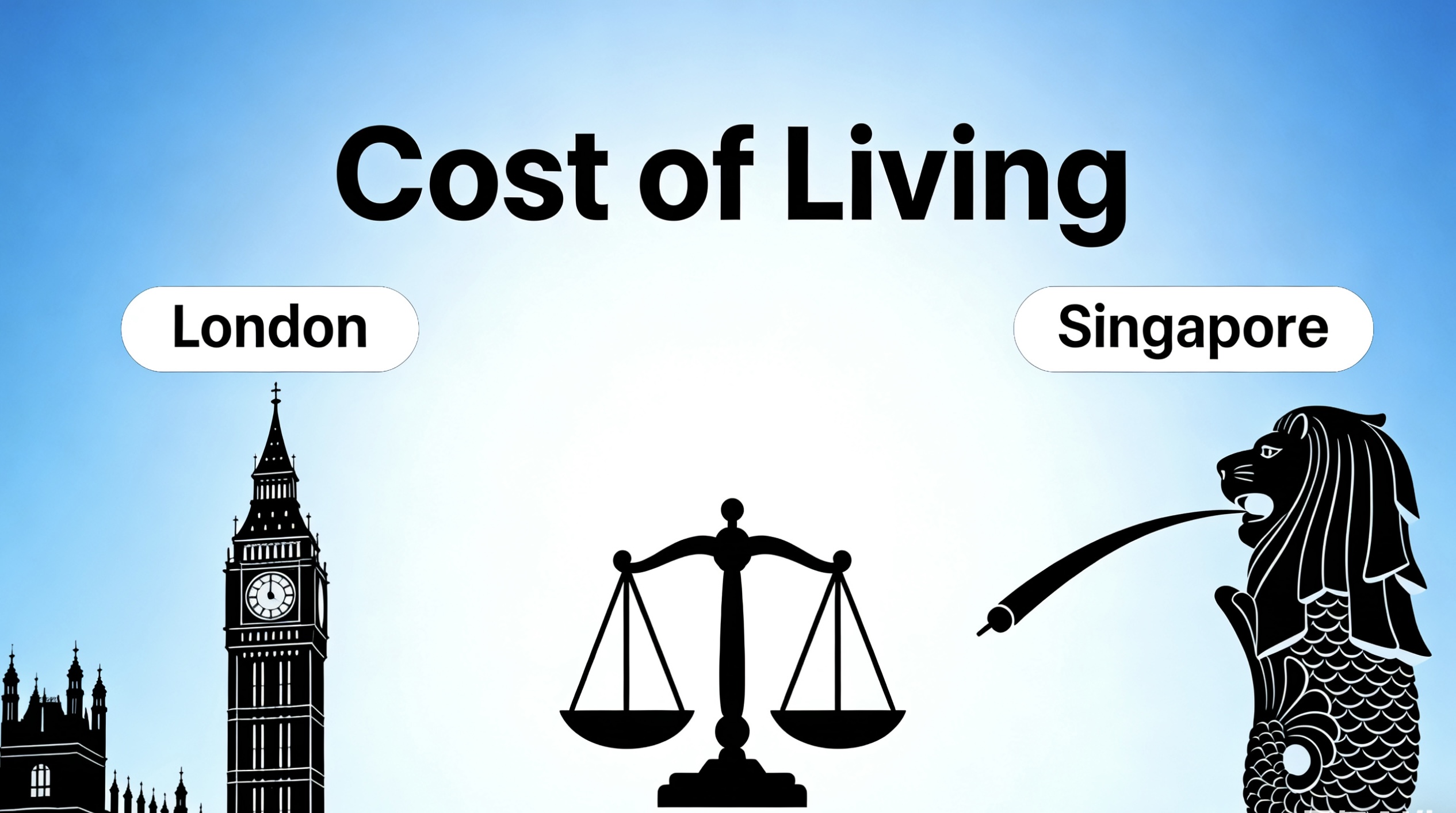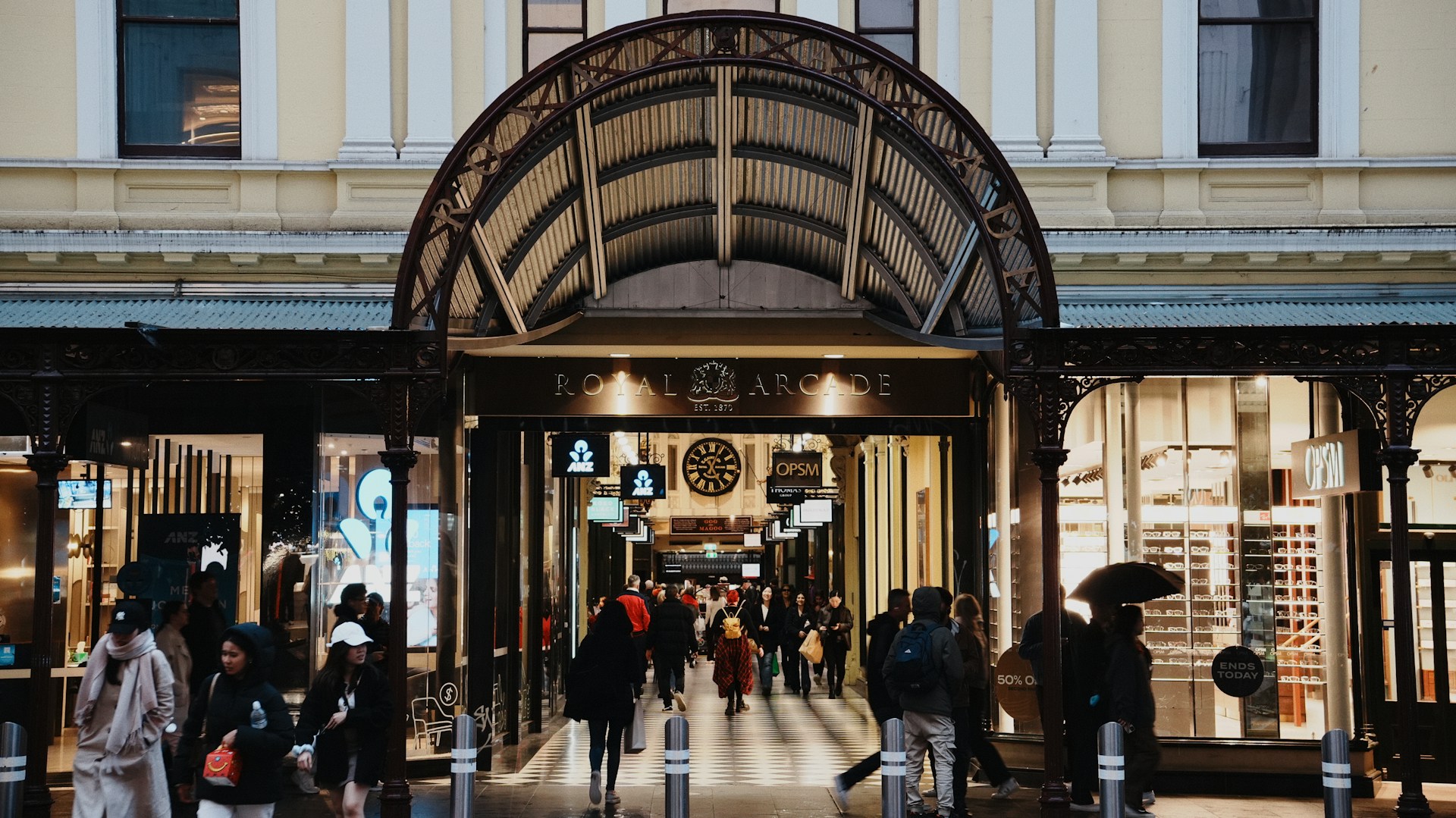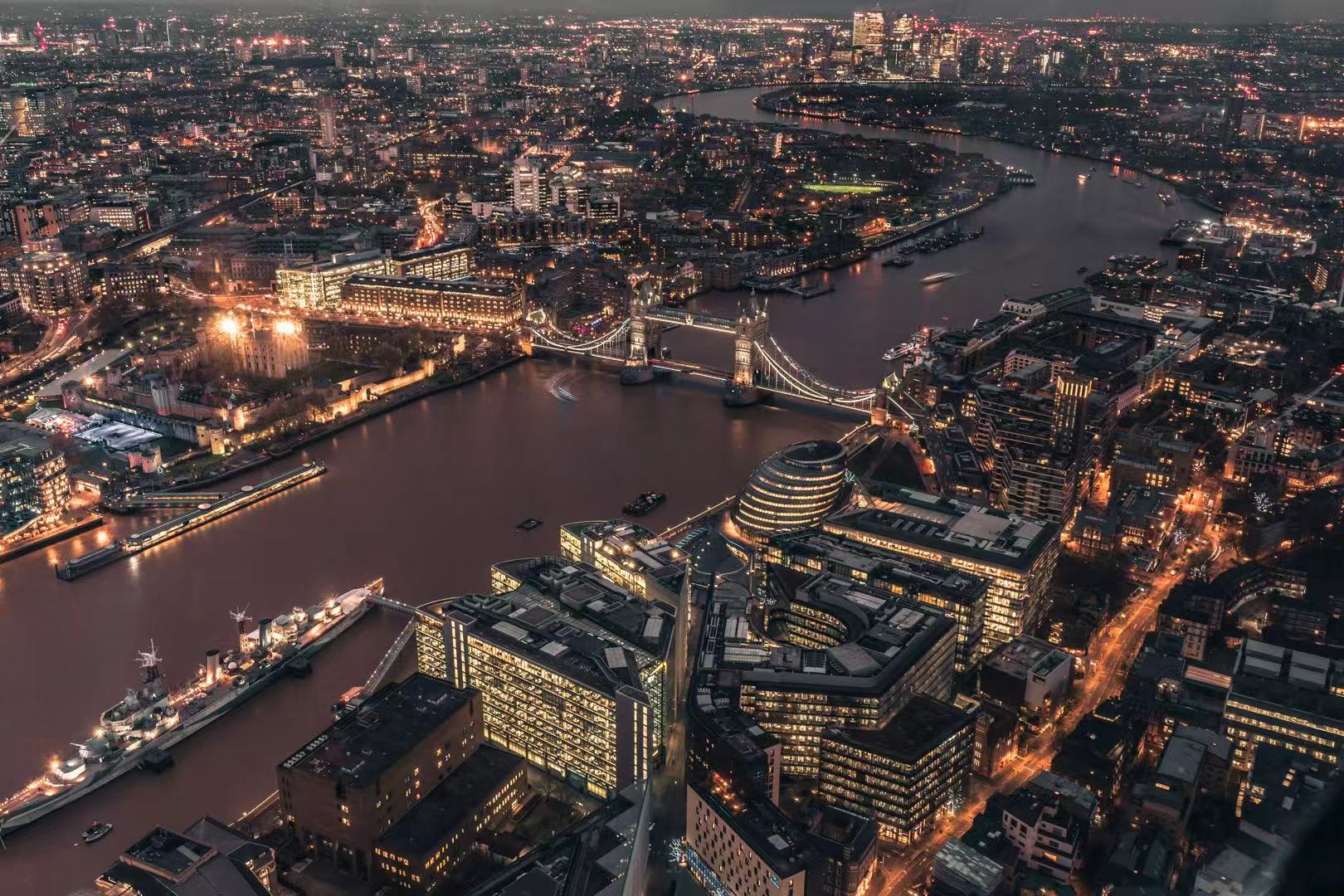What are the biggest cities in UK? London, as a megacity, can top the list. With second Britain largest cities like Birmingham and Manchester, major cities like Glasgow, Leeds, Liverpool, etc., and other large cities like Belfast, Bristol, Nottingham, etc. This blog gives you the list of the biggest cities and biggest cities in terms of population and area size. Let’s explore those vibrant cities in the United Kingdom, from bustling London to the old Edinburgh, each of the UK’s biggest cites offers a unique blend of culture, history, and modernity.
British Biggest Cities
What is British biggest city? The answer is easy, London. As one of the largest cities in UK, London has a rich history dating back to Roman times as Londinium. London has a population of over 8.8 million (over 14 million in the metro area), it spans 1,572 km², making it Europe’s most populous urban area. Besides, London is a global financial and cultural hub, it hosts iconic landmarks like the Tower of London and Buckingham Palace. It drives 22% of the UK’s GDP and is a finance, arts, and education centre. With over 300 languages spoken in this place, the diversity in London shapes its vibrant culture, and its influence in media, politics, and tourism cements its status as a world-leading metropolis. So, there is no doubt that London is the biggest city in terms of comprehensive strength.
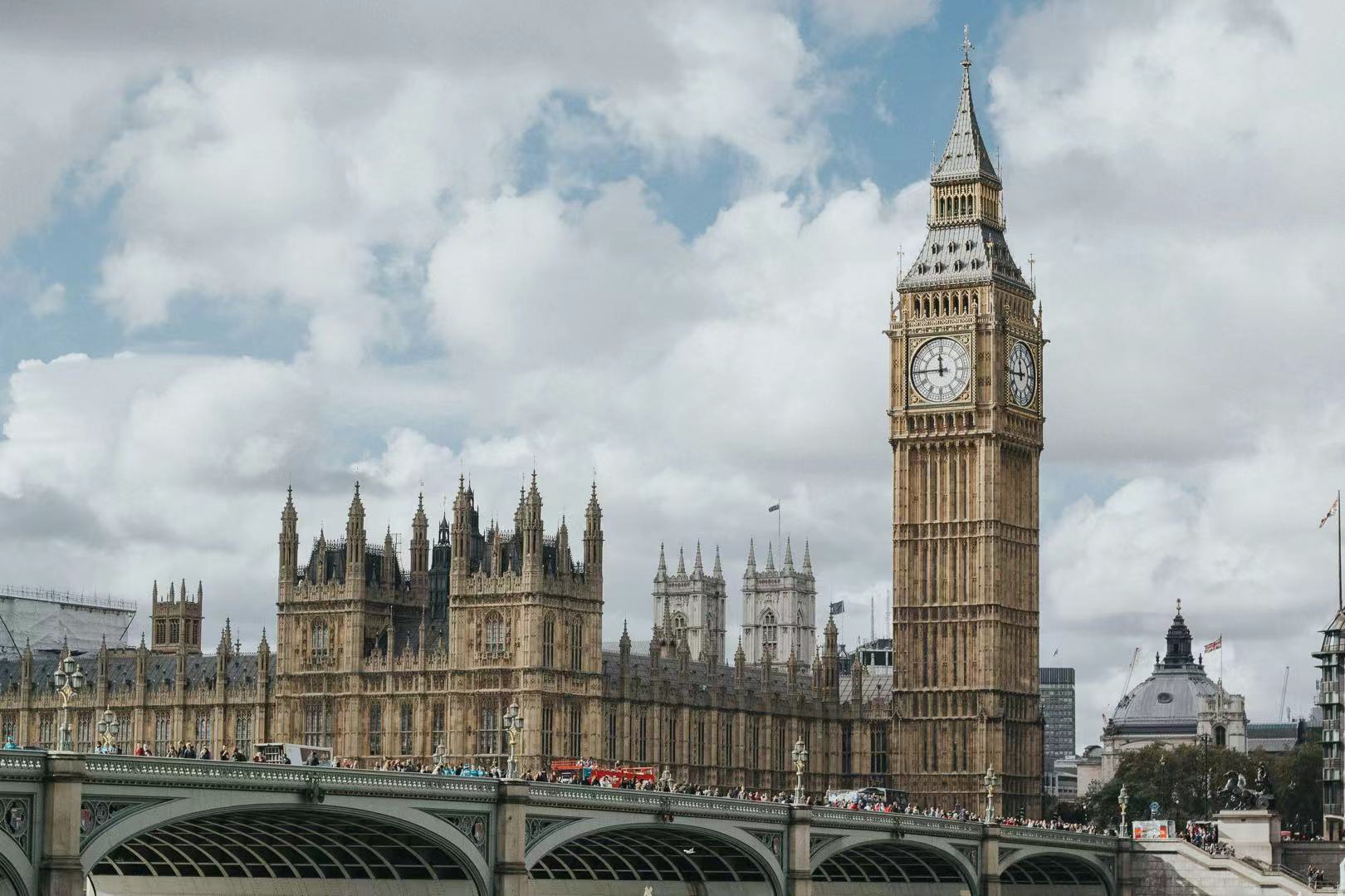
Second Biggest City in UK
After London, Birmingham and Manchester are considered as the second biggest cities in UK. In terms of population, Birmingham is the second biggest city, located in the West Midlands, with a population of over 1,15 million, it’s a central commercial hub, known for manufacturing, finance, and tech. Yet, Manchester is sometimes considered second-most important after London regarding cultural, economic, and historical impact. While Birmingham is technically larger in population and area, Manchester rivals it as a powerhouse of industry, media, and innovation.
Biggest Cities in Scotland, Wales, North Ireland
While London is the megacity in the UK, the largest city in Scotland is Glasgow, which is known for its industrial heritage, vibrant arts scene, and Victorian architecture. With a population of around 635,000, it boasts cultural landmarks like the Kelvingrove Museum and a lively music and nightlife scene. A friendly, dynamic city with a rich history.
The largest city in Wales is Cardiff. As Wales’ capital, Cardiff blends historic charm with modern energy. It’s home to 370,000 people, it features Cardiff Castle, Millennium Stadium, and a bustling waterfront. A cultural hub with vibrant nightlife, parks, and strong rugby heritage, it’s a compact, lively city with Welsh character.
The largest city in Northern Ireland is Belfast. As Northern Ireland’s capital, Belfast is a city of industrial heritage and vibrant culture. With 345,000 residents, it’s famed for the Titanic Quarter, Victorian architecture, and lively pubs. It’s also a gateway to the Giant’s Causeway, it blends history, creativity, and warm local charm.
Top 10 Largest Cities in UK
To define the “biggest” is difficult. To provide the reader with the most correct and real information, here, we have listed the top 10 biggest cities in UK in terms of comprehensive strength, including economic, population, cultural, and influence aspects. The top 10 British biggest cities include cities like London, Manchester, Birmingham, Glasgow, Liverpool, Leeds, Sheffield, Edinburgh, Bristol and Leicester. You may notice that other cities like Cardiff and Belfast weren’t on the list due to their small size, but that didn’t deny their regional influences.
1.London
Region: Greater London
Population: 8 million +
Population Density (people/km2): 5,000
Crime Rate: 85
Cost of Rent: ₤2,500+
Attractions: Buckingham Palace, the Tower of London, The British Museum, The Big Ben, etc.
London is a megacity. It is the largest and most dominant city due to a combination of historical, economic, and geographical advantages The Romans originally founded it as a port for trading 2,000 years ago. Later, the seat of the British monarchy and government cemented its political and commercial importance. The Industrial Revolution and the British Empire further amplified its growth, attracting global trade and migration. Today, London’s unparalleled economic power generates nearly a quarter of the UK’s GDP. It’s also the centre of finance, insurance, media, technology and the arts. The city’s ability to continuously reinvent itself while maintaining global connectivity ensures its ongoing supremacy over other UK cities in size, wealth and influence. As a megacity, London is also a sought-after destination for studying abroad, however, the student accommodation in London can be hefty.
2.Manchester
Region: Greater Manchester
Population: 570,000
Population Density (people/km2): 4,300
Cost of Rent: ₤1,100+
Crime Rate: 113
Attractions: Old Trafford, Science & Industry Museum, Manchester Art Gallery, Northern Quarter, etc.
Manchester ranks among the Britain largest cities and most influential cities due to its pivotal role in the Industrial Revolution, which established it as a global manufacturing and trade powerhouse. The growth in textile manufacturing once made it the world’s first industrial city. But now, the manufacturing industry is being replaced by innovative industries, such as music, media, science and engineering. And now Manchester is also home to world-class universities like University of Manchester, iconic football clubs, and the BBC’s MediaCityUK. Its innovation, infrastructure, and vibrant culture ensure its continued prominence.
3.Birmingham
Region: West Midlands
Population: 1.2 million
Population Density (people/km2): 3,900
Cost of the Rent: ₤900+
Crime Rate: 111
Attractions: Cadbury World, Birmingham Museum& Art Gallery, Jewellery Quarter, Bullring Shopping Centre, etc.
Birmingham as one of the British biggest cities, has a strategic location, robust economy, and rich industrial heritage. Birmingham was a small town back in medieval times. It grew rapidly during the 1700s, and after the Industrial Revolution, it became home to thousands of skilled craftsmen as well as inventors, scientific and academic thinkers, earning the nickname “Workshop of the World”. Today, Birmingham thrives as a diverse economic hub, with strengths in finance, technology, and professional services. With top-tier universities, excellent transport links, and a youthful multicultural population, Birmingham remains a dynamic and influential urban powerhouse.
4.Glasgow
Region: Central Scotland
Population: 620,000
Population Density (people/km2): 3,600
Cost of Rent: ₤800+
Crime Rate: 130+
Attractions: Kelvingrove Art Gallery & Museum, Glasgow Cathedral & Necropolis, George Square, Riverside Museum, etc.
As Scotland’s most populous city, Glasgow (Glaschu in Scottish Gaelic) was originally a small fishing village, it played a pivotal role in shipbuilding and engineering during the 19th and 20th centuries. It produced half of Britain’s ships and a quarter of the world’s railway engines. The city created many famous artists, inventors, novelists, and stunning architecture, it is home to world-class institutions like the University of Glasgow and the Kelvingrove Art Gallery. Glasgow is one of the biggest cities in UK, making it an attractive tourist destination for people worldwide.
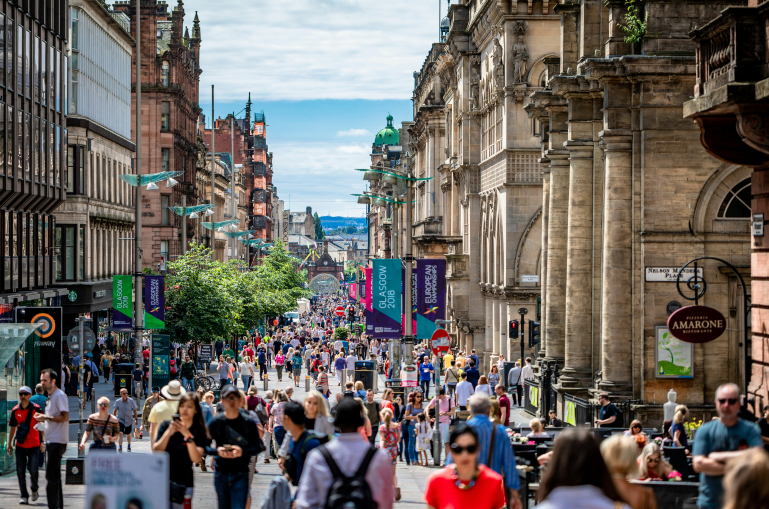
5.Liverpool
Region: Merseyside
Population: 590,000
Population Density (people/km2): 4,000
Cost of Rent: ₤700+
Crime Rate: 101
Attractions: The Beatles Story & Cavern Club, Albert Dock, Anfield Stadium, Liverpool Cathedral, etc.
As one of the largest cities in UK, Liverpool is known for its historic maritime power, located on the east side of the Mersey river. As a significant global port during the British Empire, Liverpool drove international trade and migration, shaping its distinctive identity. In 1715, the first commercial dock was built, and the trade of slaves, sugar, tobacco, and rum helped to make the city wealthy. Today, Liverpool still maintains its diverse cultures, with people settling from all around the world. It’s famous as the birthplace of The Beatles, home to a UNESCO-listed waterfront, and world-class institutions like Tate Liverpool. Its economic focuses are on logistics, tourism, and creative industries.
6.Leeds
Region: West Yorkshire
Population: 520,000
Population Density (people/km2): 1,500
Cost of Rent: ₤850+
Crime Rate: 114
Attractions: Royal Armouries Museum, Leeds Kirkgate Market, Roundhay Park, etc.
Leeds has been a market town for over 1,000 years, it was also influenced a lot by the historical Viking times, for example, there are still some streets named after the Viking times, such as Kirkgate. It grew during the 1600s and 1700s because of the wool trade. Nowadays, as one of the biggest cities in UK, Leeds has evolved into a significant financial and legal hub, hosting the UK’s largest regional financial district outside London. Its vibrant retail sector, anchored by the Victoria Quarter, and world-class universities, including the University of Leeds, attract tourists, talent and investment worldwide.
7.Sheffield
Region: South Yorkshire
Population: 560,000
Population Density (people/km2): 1,500
Cost of Rent: ₤700+
Crime Rate: 97
Attractions: Peak District National Park, Winter Garden, Kelham Island Museum, etc.
Renowned as the “Steel City”, Sheffield lies at the edge of the beautiful Peak District with many steep hills, it has more than 250 parks, woodlands and gardens. Sheffield is considered one of the British biggest cities. It is well known for sports, including snooker, ice hockey, and the world’s oldest football club. Sheffield has reinvented itself as a leader in advanced manufacturing, engineering, and sustainable technologies. It’s home to two leading universities, including the University of Sheffield.
8.Edinburgh
Region: Central Scotland
Population: 490,000
Population Density (people/km2): 2,000
Cost of Rent: ₤1,200+
Crime Rate: 86
Attractions: Edinburgh Castle & Royal Mile, Arthur’s Seat, Holyrood Palace, Fringe Festival (the World’s largest arts festival), etc.
Renowned as the capital city of Scotland and its UNESCO-listed Old and New Towns, Edinburgh blends medieval charm with modern innovation. Edinburgh has prestigious universities like the University of Edinburgh, and iconic landmarks like Edinburgh Castle, Arthur’s Seat, and an ancient volcano. Edinburgh had primary industries like printing, brewing and distilling during the 1800s. And now, these primary industries have been replaced by financial and business services. It’s one of the biggest cities in UK.
9.Bristol
Region: South West England
Population: 580,000
Population Density: (people/km2): 4,000
Cost of Rent: ₤1,200+
Crime Rate: 74
Attractions: Clifton Suspension Bridge, SS Great Britain (Brunel’s ship), Bristol Zoo & Aquarium, Street art (Banksy’s hometown), etc.
Considered as one of the largest cities in UK, Bristol was one of the oldest cities in the UK, founded in around 1000CE. Due to its unique geography, it quickly became an essential port for trade with Ireland. In the 1700s, it was a central city for slave trade to the Americas, as well as for products like sugar, cotton and rum. now, it’s an important centre for aerospace, electronics, green technology and media. And it’s a key transport and business nexus in the Southwest.
10.Leicester
Region: Leicestershire
Population: 420,000
Population Density (people/km2): 4,200
Cost of Rent: ₤750+
Crime Rate: 83
Attractions: King Richard III Visitor Centre, National Space Centre, Leicester Market (Oldest in the UK), etc.
Leicester is one of Britain’s oldest cities and one of British biggest cities. Once as a Roman fort, Leicester has a history over 2,000 years old. The city boasts a strong retail, manufacturing, and logistics economy. After the World War 2, the population expanded broadly and building of large housing estates are appearing. Leicester is one of Britain’s most multicultural cities and about 70 languages are spoken there.
Biggest Cities in UK by Population
While knowing the largest cities in UK in terms of comprehensive strength, there are other metric to define the biggest. The table below lists the 20 British biggest cities in terms of population. These most populated cities include London, Birmingham, Glasgow, and Liverpool, etc.
| City | Ceremonial county | Population |
|---|---|---|
| London | Greater London | 8,907,918 |
| Birmingham | West Midlands | 1,153,717 |
| Glasgow | Glasgow | 612,040 |
| Liverpool | Merseyside | 579,256 |
| Bristol | Bristol | 571,922 |
| Manchester | Greater Manchester | 554,400 |
| Sheffield | South Yorkshire | 544,402 |
| Leeds | West Yorkshire | 503,388 |
| Edinburgh | Edinburgh | 488,050 |
| Leicester | Leicestershire | 470,965 |
| Coventry | West Midlands | 369,127 |
| Bradford | West Yorkshire | 361,046 |
| Cardiff | South Glamorgan | 350,558 |
| Nottingham | Nottinghamshire | 311,823 |
| Kingston upon Hull | East Riding of Yorkshire | 288,671 |
| Newcastle upon Tyne | Tyne and Wear | 281,842 |
| Stoke-on-Trent | Staffordshire | 277,051 |
| Southampton | Hampshire | 269,231 |
| Derby | Derbyshire | 263,933 |
| Portsmouth | Hampshire | 248,479 |
Biggest Cities in UK by Area
To better know what are Britain largest cities, we also listed the top 20 biggest cities in UK in terms of area size. Check it out!
| City | Area Size |
|---|---|
| London | 607 sq mi |
| City of Carlisle | 401.53 sq mi |
| Manchester | 243.4 sq mi |
| Birmingham | 231.2 sq mi |
| Leeds | 221 sq mi |
| Bradford | 216.9 sq mi |
| Liverpool | 204.1 sq mi |
| Stoke-on-Trent | 196.2 sq mi |
| Sheffield | 187.6 sq mi |
| Edinburgh | 169.5 sq mi |
| Bristol | 135.1 sq mi |
| Cardiff | 129.5 sq mi |
| Coventry | 128.8 sq mi |
| Leicester | 123.3 sq mi |
| Norwich | 93 sq mi |
Conclusion
What are the UK’s biggest cities? While rankings can vary—whether by population, area, or economic influence—one thing is certain: London tops the list. Despite the size of city, each city has its own unique appeal. From rich history and buzzing arts scenes to thriving business hubs and modern energy, no matter your interests, these cities promise unforgettable experiences.
FAQ
London, Birmingham, Glasgow, Liverpool, and Manchester are considered the largest cities in the UK in terms of population and area.
The top 10 biggest cities in the UK include London, Glasgow, Birmingham, Leeds, Liverpool, Bristol, Sheffield, Manchester, Edinburgh, Leicester.
Belfast, Birmingham, Bristol, Cardiff, Edinburgh, Glasgow, Leeds, Liverpool, Manchester, Newcastle, Nottingham, and Sheffield are the 12 core cities of the UK.
The 12 regions include Wales, Scotland, North Ireland, London, North East, North West, Yorkshire, East Midlands, West Midlands, South East, East of England and South West. The latter 9 regions are in England.
There are 76 cities in the United Kingdom. And 55 in England, 8 in Scotland, 7 in Wales, and 6 in North Ireland.
Colchester is recognised as the oldest town in Britain. Colchester was mentioned by Pliny the Elder, who died in AD 79.
London is one of the wealthiest cities in the UK, London is a global financial hub, and is the birth place of the Bank of England, and the London Stock Exchange. Besides, London has high-paying jobs, luxury real estate. Other cities like Manchester, etc, are wealthy as well.
London is so populated for many reasons. First, it’s the capital city of England, and serves as the cultural and economical centre in the UK, offering millions of job opportunities and other benefits. Besides, due to its geographical advantage, London is home to many top-tier universities, attracting millions of students from both domestic and international. In addition, London is a popular travel destination, attracting many tourists who flock into this megacity to explore its historical charm and modernity.
Birmingham is quite a bit bigger than Manchester if you look at the official city limits. Birmingham has over 1.1 million people, which is roughly double Manchester’s population of about 550,000.
London is England’s largest city, not Liverpool. Birmingham is also bigger. While Liverpool is still a major UK city, its population doesn’t match the top two.
